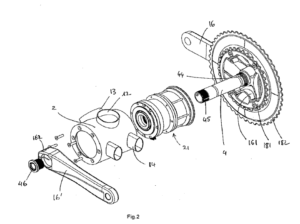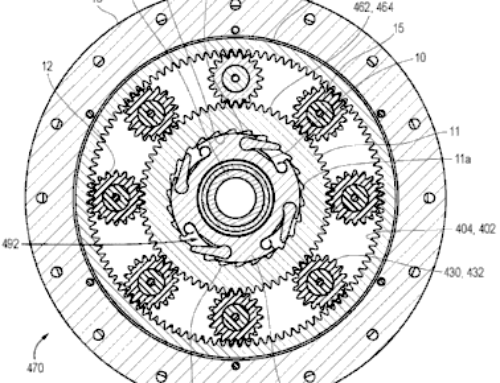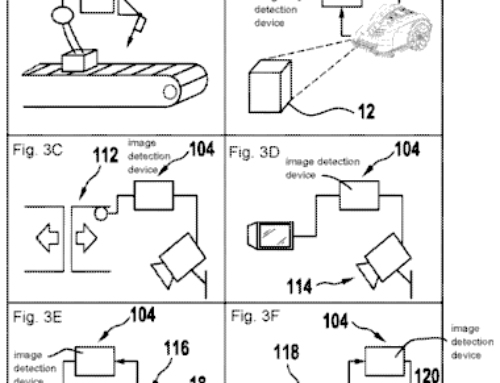
Mavic’s new ebike motor patents are what the company is looking to for regaining its footing, after a tumultuous few years. The iconic French brand recently opened and staffed a new US office in Vermont – and of course, they’re looking to make inroads with the product they’re most known for: wheels. Yet Mavic’s comeback includes a foray into technology based not around wheels, but a bottom-bracket based ebike motor.
Wheels and bottom brackets are the two places that ebike motors can be located, so it may be surprising where Mavic aimed its ebike efforts. “This project was launched to show that Mavic is still very much an innovator,” Josh Saxe, Mavic’s North American Sales and Marketing Manager, told BRAIN. “The motor is a concentrate of technology which answers a demand that no other motor can satisfy.”
Mavic has named the system X-Tend, and it points towards their interest in lightweight ebike technology that appeals to enthusiast-type road and gravel cyclists. According to the company, the vast majority of ebike sales fall into the urban/trekking category, along with MTB. But they say electric road has languished due a combination of factors: too much weight, excess mechanical drag when a bike is pedaled with the motor off, and limited range.
X-Tend’s weight, run time, and available power/torque speak to road cycling applications. Mavic says the motor drive weighs 1.2 kg, which can result in complete ebike of about 10 kg / 22lbs (depending, of course, on the bike ‘spec). Peak power is 380 watts, with peak torque at 50 Nm. A 360 Watt-hour battery is standard, with an extended range auxiliary battery an option.
Design-wise, the X-Tend system configuration is unlike all other bottom bracket (or “mid-drive”) ebike systems. The motor and related components (battery aside) are contained in an 87 mm diameter cylindrical shell, with a drive arm that pushes the spider of any Shimano Hollowtech II type crankset. Though compatible with standard cranks, the oversize 87 mm shell means it won’t fit existing frames. BMC has made custom frames for Mavic, so the system could be tested. Claimed weight is under 10 kgs / 22lbs, and the compact BB area (for an an ebike) of the frame doesn’t announce its electrical enhancement to others.
Mavic’s new ebike motor patents include filed eight US applications for the system, plus filings in other countries. In fact, the only US patent applications the company has filed in the last five years are for this ebike system. The patent applications focus on technical areas including a shell-based motor, a gear reduction unit, a clutch to engage/disengage the drive, an integrated power meter, and a related control system.
Patent application: ELECTRIC ASSIST DEVICE FOR A BICYCLE, filed in January of 2020, describes the overall architecture of the system. The motor is positioned in the left (non-drive) side of the shell, and includes bearings for standard cranks. To the right of the motor, a reduction gear system – which Mavic has dubbed a cycloidal reducer –brings the high rpms that electric motors operate at down to the range of pedaling cadences. It’s a type of planetary gear system – think 3 speed hub, but much more refined.
A clutch mechanism sits to the right of the gear reduction system, and it’s how Mavic meets their goal of a zero-drag system when pedaling without motor assistance. It works much like a freewheel/ freehub, with pawls that engage a toothed ring when the motor is engaged. Unlike a freewheel, the pawls can draw back from the ring, resulting in no contact or “clicking”, and achieving the stated zero-drag goal.
The output side of the clutch includes a drive arm, which turns the spider of a standard crankset. Mavic has specified that any Shimano Hollowtech 2 crank is compatible, while the patent application states more broadly that different drive arms may be created for specific models of cranks. Numerous other methods for linking the overall motor drive to a crank are described. That’s standard patent language, with Mavic looking to cover as many options as possible, even if some might never be commercialized.
An integrated torque sensor, which serves as the force component of a powermeter, is also disclosed in Mavic’s patent applications. Multiple versions of a strain gauge based system are described, all of which can be used for feedback into the motor control system.
Mavic’s new ebike motor patents show that Mavic is well past the early-stage of technical development, saying over 120,000 km of field testing has taken place, and journalists have tried Mavic’s BMC test rigs. But the company is up-front that the system is not in production yet. “We are actively seeking financial partners,” said Saxe. As mentioned, the company teamed with BMC for prototypes, and they said discussion with other bicycle companies is ongoing. It’s a gamble for Mavic: even amidst reorganization, the company invested heavily in R&D to get to this stage, but without the capital to put the system into the market and reap the rewards.
Could the X-Tend motor start a trend of increased ebike sales in the road category? Mavic does have a history of being ahead of its time. The French company’s efforts at electronic shifting during the 1990s were in many ways groundbreaking. Yet their Zap and Mektronic systems floundered and were discontinued for numerous reasons – from technical glitches to market acceptance. Decades later electronic shifting has now vanquished cables at the higher end of new road bikes. There’s little question that the market is ripe for a light, efficient, road-oriented ebike motor – whether X-Tend is the solution remains to be seen.


